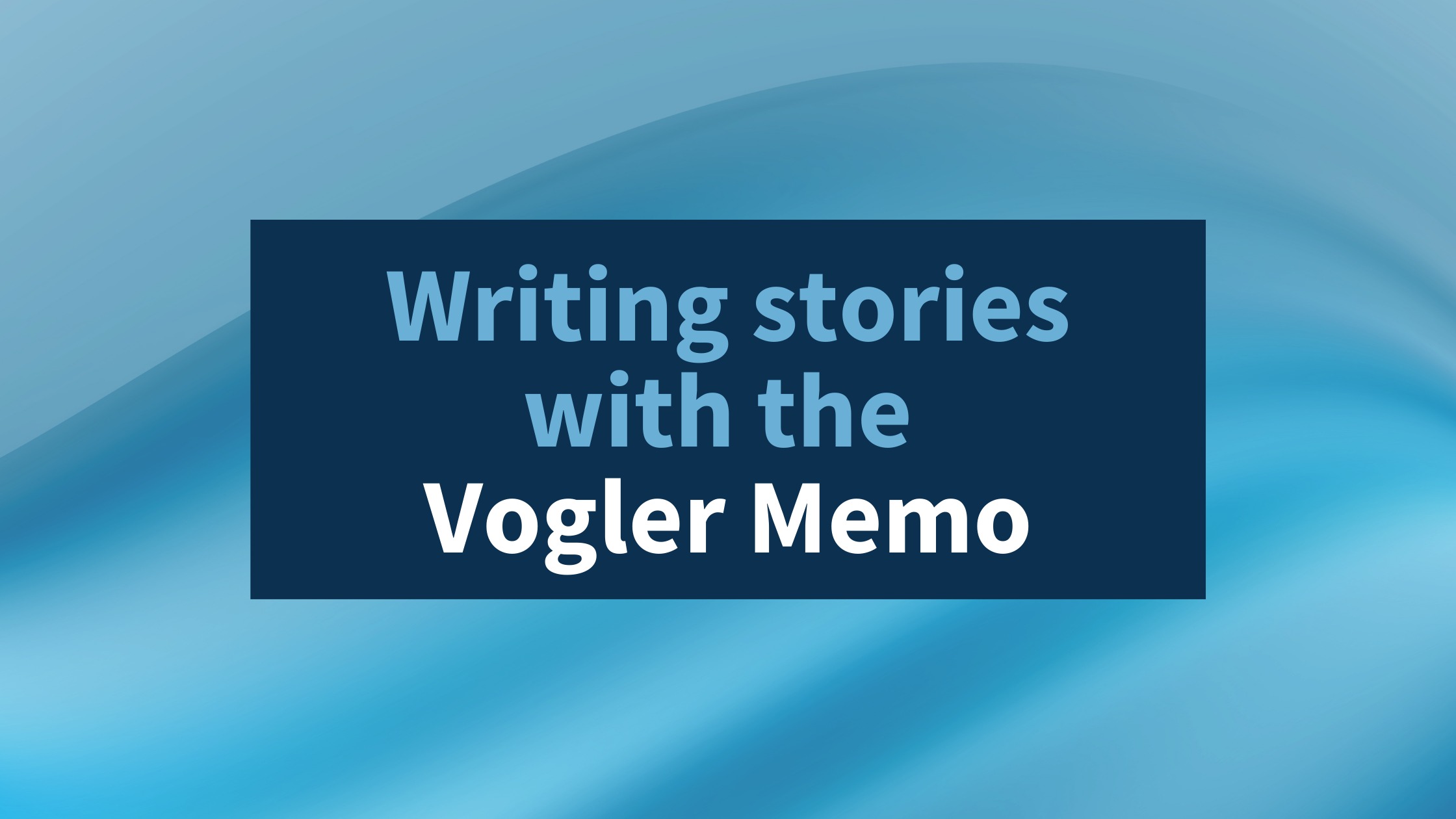Would you like your characters to be compelling?
Of course you would. But you also have to create irresistible plot points, build fantastic settings, and craft beautiful prose. Amid all that work, it’s easy for authors to gloss over character arcs.
Luckily, writing a strong character arc isn’t a monumental task, as long as you know what you’re doing.
What is a character arc?
A character arc is a map of the personal transformation that your character undergoes throughout your novel.
Typically, a character arc contains the following:
- Goal: Your character wants something: a golden chalice, the respect of her family, a way home from a distant planet, redemption for past deeds.
- Truth: There is an absolute truth in your story—money can’t buy happiness, absolute power corrupts absolutely—that your character will uncover throughout the narrative.
- Lie: Pobody’s nerfect. All well-rounded characters have flaws and misconceptions that oppose the truths in their stories. Extra credit: Who or what imprinted this falsehood on your character?
Although writers and editors debate the exact number, four types of character arcs comprise most of modern literature:
- Transformation arcs: An average person becomes a hero or savior by overcoming obstacles.
- Growth arcs: An average person overcomes a personal struggle—fear, guilt, greed—to become a better version of who they already are.
- Fall arcs: The opposite of a growth arc. An overpowering Lie eclipses an unrealized truth, which leads a character into a deep, inextricable personal darkness.
- Flat arcs: A character knows the truth, but they must convince others or fend off doubt.
Examples of character arcs
Scour your local library, bookstores, and even your own overcrowded bookshelf. You know what you’ll find? Arcs on arcs on arcs. No timeless story is complete without them.
Caution: Spoilers ahead.
1. Transformation arc: Harry Potter and the Sorcerer’s Stone
At the heart of J.K. Rowling’s beloved book series is a single question: What makes a hero a hero?
Harry’s Goal: To be more than what he is.
Harry’s Lie: He isn’t anything special.
Harry’s Truth: He is special, for he is the only one who can defeat a great evil.
At first, Harry is an unloved orphan living in a cramped room under the stairs. But after run-ins with a talking snake, a million mail owls, and a giant hairy groundskeeper on a flying motorcycle, he begins to see the truth. A year at a wizard school doesn’t hurt either.
Here’s what’s fascinating about Harry’s journey throughout all seven books: His truth in the first novel becomes the lie in his series arc. Over the next six books, Harry develops an ugly hero complex and must undergo a personal change—or a growth arc—to become selfless, trust his friends, and defeat Lord Voldemort for good.
2. Growth arc: Edmund in The Lion, the Witch and the Wardrobe
How does everyone’s least favorite Pevensie child become the beloved Edmund the Just? It’s all about his personal transformation.
Edmund’s Goal: To have power over others.
Edmund’s Lie: Doing the wrong thing is OK if I benefit from it.
Edmund’s Truth: Empathy, wisdom, and courage are more powerful than any king.
In the beginning, Edmund is a total brat. He’s selfish, cruel, and willfully ignorant to the consequences of his actions. Hell, he rats out his siblings to the White Witch for an extra gobful of Turkish delight.
But once he sees the repercussions of his actions—a party of woodland creatures turned to stone, Aslan sacrificed in his place—he begs forgiveness from his family, battles the White Witch, and nearly dies in the process. He learned from his mistakes and is all the better for it. That’s something everyone can relate to.
3. Fall arc: Macbeth in Macbeth
A tragedy to end all tragedies, William Shakespeare’s Macbeth is a masterclass on what happens when good characters walk dark paths.
Macbeth’s Goal: To become King of Scotland.
Macbeth’s Lie: Caution and inaction are weaknesses.
Macbeth’s Truth: Ambition without conscience is destructive.
Perhaps if Macbeth had stayed the course of a noble, thoughtful leader, he would have become a great leader. But after three witches prophesize Macbeth’s ascent to King of Scotland, he and his wife, Lady Macbeth, scheme and murder to force the prophecy come true.
As Macbeth drops body after body, he becomes more overconfident and paranoid of being found out. In the end, it is the fine print of the witches’ final prophecy (“for none of woman born shall harm Macbeth”) that leads to Macbeth’s death at the hands of Macduff, who “was from his mother’s womb untimely ripped.”
4. Flat arc: Katniss in The Hunger Games Trilogy
In Suzanne Collins’ wildly popular Hunger Games Trilogy, Katniss Everdeen ushers in a revolutionary change in the world around her, without changing her own fundamental values.
Katniss’s Goal: Save her sister’s life.
Katniss’s Lie: It’s not up to her to ignite a revolution.
Katinss’s Truth: A single spark can set fire to global change.
Katniss is an excellent example of a reluctant hero—a common archetype in flat arcs. She initially only volunteers to partake in the Hunger Games to save her sister’s life, and in the first book, she seems to have little desire to take down President Snow’s entire government.
By the final book in the series, however, Katniss has become an inspiration for an entire revolution. The second and third books are focused almost entirely on how she convinces the rest of the oppressed districts to rise up and take back power from their oppressors. Her core beliefs, however, remain unshaken, and the Katniss in book three is fundamentally the same one we met in the first pages of book one—albeit with lots of new traumas.
How to make your character arc compelling
Once you have a good understanding of what a character arc is and why it is so important to your story, you are perfectly placed to create a compelling arc for your character.
1. Plan your arc
Begin with a starting point for your character, including their ultimate goal, followed by events that drive the change and a final point that highlights the inner journey have taken. In this early stage, you should also brainstorm how your character’s changes influence the narrative.
Even if you are more of a pantser than a planner, knowing your character’s goals and the overall sketch of their arc is important to guide your novel in the right direction (even if it ends up going places you don’t expect).
For an example, let’s say you are writing a story about a woman who travels back in time to save her brother’s life. Before you begin writing, you might hammer out these details about her arc:
Starting Point: In the depths of grief at her brother’s funeral.
Events that drive change: Spying on her professor, who has invented a time machine. Arriving in the past where she must develop a new persona. Hunting down her brother’s killer and influencing his life.
How your character’s change influences the narrative: Will she learn that meddling with the past is a dangerous game? Will she come to understand her brother wasn’t who she thought he was? Will she fall in love with her sibling’s eventual killer? All of these factors could influence the narrative, depending on how her personal changes play out.
2. Make your arc believable
Even in fantasy realms of monsters and aliens, your character’s motivations, acts, and thoughts must feel natural.
First, establish the lie. In the example above, let’s say that the lie for the character is that her brother was a good man, when in reality he had a dark side. To establish this lie, your reader must believe that she truly loved her brother and is grieving for him at the start of the novel. You wouldn’t want to put just a few sentences describing her grief at her brother’s funeral. Instead, you might use flashbacks to show their interactions in childhood, or give her a chance to talk with other family members about her brother’s memory. Be sure to show not tell to create a convincing lie before moving ahead with the arc.
3. Include difficulties
Often, making an arc believable includes challenges and trepidation along the way.
Harry Potter didn’t simply wake up one day and duel with Voldemort. He went through years of self-doubt, epic trials, and mountains of homework before he became a hero.
There are many ways your character may face hurdles in their development. They could come from their own thoughts and behaviors or from antagonists, social expectations, or physical barriers.
In our example, the heroine of the story could find herself sent back to the wrong period in time, or she may discover unseemly things about her brother along the way that change her perspective. These difficulties will become the main thrust of your plot, and they’ll turn your novel outline into a truly compelling read.
4. Use your own experiences
Everyone has experienced events that changed them: moving to a new city, going through a rough breakup, or winning the lottery.
Pick an event in your own life and think about how it changed you in some way.
- Was the change immediate?
- Did you grow or fall as your own character?
- Were there ancillary factors that influenced your change?
- Did you face challenges throughout your change?
- What was the final result of the change, for you and those around you?
Real-world experiences can give color and life to the arcs your characters undergo.
Character arc worksheet
Eventually, we will create a worksheet of our own, but for now, this character arc worksheet from Sara Letourneau offers a simple guide to building a strong arc.
This worksheet moves you through the steps of creating the following:
- Your character’s false beliefs
- Challenges to your character’s beliefs
- What they learn from their journey (often tied to the theme of the novel)
- What triggered their change
As a practice run, use this sheet on one of your favorite novels. Identifying existing arcs in stories you know well can inspire you to create your own.
Character arc template
We will also soon develop our own character arc template, but in the meantime, check out this character arc template from Now Novel. It covers five sections:
- Find your character’s first goal
- Brainstorm helps and hindrances
- Find a point of no return
- Plot growth and change
- Bring external and internal conflicts to a head
Perfect your character arcs with developmental editing
Like any aspect of creating a novel, the work isn’t over after you’ve finished your first draft. Your editor will work with you to refine and align your character arc, find and close holes in the arc, and generally make the character’s path more believable.
The developmental editing stage is the best time to address character arc issues. During this process, your editor will read the manuscript in its entirety and offer insights on how you can polish the character arc (along with other suggestions for the manuscript).






